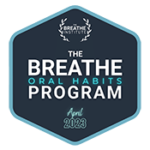An age old practice involving your child’s lost teeth which many people like to have fun with is that of the Tooth Fairy Tale. There are many folklore tales and pre-cursing traditions that have been practiced around disposal of children’s baby teeth. Some of these stories are rather dark and treacherous while others use more child-friendly, fantastical imagination. No matter where it came from, The Tooth Fairy remains alive and well in many American homes today.

Whether you participate in the traditions or not, we have construed some creative means to use the imaginary tale for the benefit of your children in their real-life learning about the resource we all need and use; money! Teaching children at a young age the purpose and means of finances will enable them to become fiscally responsible adults. Potentially, yielding less of the learnt-the-hard-way experiences. Partnering with the Tooth Fairy is just one of the ways to start teaching children about money along with other means such as chores, monetary birthday gifts, and sidewalk cash (finders keepers!). It offers a great starting point for younger kids and a fun incentive for them as they grow that can also encourage them in the natural process of losing their baby teeth.
Discovering the tangible currency of coins and paper bills
Our modern world is shifting rapidly to use of plastic currency numbers and online banking, but the value of tangible money is irreplaceable. Children need visuals and sense of touch to stimulate and ingrain what they learn. The best way to teach the value of a dollar, give them a dollar they can see and touch! Similarly, showing them the same value in coins also shows them how finite money is. While swiping a card may feel fun, cash is real. There are studies repeatedly showing that people really do spend more with plastic than with cash. Give your kids a healthy start in their perspective with money by using cash to stash under that pillow. Teach them the value of each coin and how many of those coins amount to equal values of larger coins and bills. Before saving and spending can begin, they first need to understand and know the value of money.
Making their first purchases
Chore allowance or tooth fairy money is typically your child’s first source of income. As they learn about the value of the money they earn, start practicing spending and saving using the toys or household items. This can turn into a fun game too for them by playing “shop” using they money they have. Setting dollar or coin amounts on toys they can afford and can’t can give way to discussion about saving money as well as prioritizing wants and needs. Same goes for the real out-and-about shopping. When they see a toy or food item they would like to have, show them how much money it costs using their coins and dollars, and how much they will have left; or, how much they may yet need. It would be advisable, however, to refrain from letting your child “borrow” from you! Once they have the money and a decision to purchase something, let them do the deal!
Learning to earn
While loosing teeth may not be the true way of “earning” a wage, it does demonstrate a good given for a value amount. Money isn’t given as often as it is earned. Whether you chose to keep the tooth fairy a secret tale, or your children know its you, aloting a small share for their little teeth can be a gateway into learning about the exchange or transaction that happens with money. Get creative and allow them to put more of an earned effort into it by increasing the value of well brushed and flossed teeth. This can give them incentive to work more diligently on their oral health along with working toward something they would like to purchase. In the real world, we work both for incentive and also responsibility!
Budgeting
Budgeting simply means you are telling your money precisely where it will go. As kids start learning from their shed teeth, chores, or monetary gifts, talk to them about allocating funds. Set up a visual system to help them see and keep track of their categories. Savings for bigger purchases, gift giving, and spending are three basic categories to start with. Of course, customize it to your family values. Envelopes, jars, a collection of piggy banks are some options to allow visualization of these funds. Budgeting like this is also a stepping stone into real-deal banking when your child is older with enough earnings for an account and can start learning to use debit cards.
Turning the Piggy Bank to the Real Bank
When is a good time to open a savings account for your kiddo? A full piggy bank (or two!) can be a good indicator. When your child is ready for this step, take them with you to the bank and let them sit in on the action of starting an account. This could also be a great time to ask for a bank tour to give yet another visual aspect of how banking and money works in the adult world they will soon be a part of. Start simple with savings, start small, and teach them the importance of maintaining their account and tracking funds.
The Tooth Fairy may be just a fun tale for some, but she can also become the entryway for your child into learning about money and the management thereof. Perhaps it is time to think about employing her to get a start on introducing your child to the world of currency, offering valuable lessons that will serve them well throughout their life!









